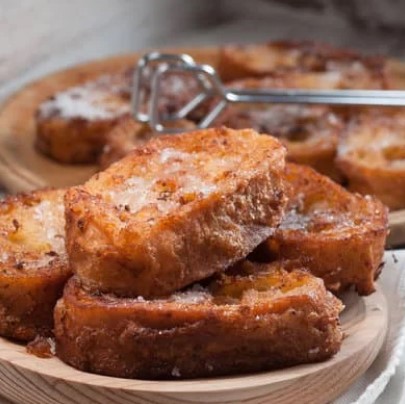
¿Cómo aprender inglés, fácilmente y de forma eficaz?
Adoptar la actitud correcta
Podrás progresar y alcanzar un nivel excepcional, pero siempre habrá cosas nuevas que aprender. Siempre tendrás que trabajar el inglés y mantenerlo. En realidad, nunca se detendrá. ¡Eso es lo que lo hace emocionante!
Establecer el objetivo correcto
Así que, para ser eficaz ahora, empieza por definir tu objetivo actual. ¿Qué nivel quiere alcanzar?
Uno de los objetivos más comunes es: Alcanzar un nivel de conversación fluido, y no tener miedo a hablar en inglés nunca más.
Es un gran ejemplo de objetivo para empezar. ¿Cuál es el tuyo?
Ten en cuenta que la segunda parte de este objetivo no está directamente relacionada con tu nivel. Se trata más bien del miedo inconsciente a cometer errores y pasar vergüenza.
Pasión, entusiasmo y práctica, el disparador para aprender inglés
Una de las mejores formas de progresar en inglés es viajar al extranjero. El viaje da el impulso para hacer del inglés una pasión. También descubrir autores fascinantes de habla inglesa. Esto te obliga a leer en ese idioma. Luego viajar, vivir y trabajar en Inglaterra. Eso ayuda a mejorar aún más. Pero el detonante puede ser la pasión que despierta ese primer viaje.
No te preocupes, la pasión, el entusiasmo y la práctica es posible sin necesidad de viajar y te explico cómo.
Las tres claves para progresar rápidamente en inglés
1) La primera clave es forzar a tu cerebro a pensar en inglés, y estar en contacto con el idioma que estás aprendiendo cada día, cada semana. Si estás en la fase de aprendizaje, y quieres progresar rápidamente, te recomiendo de 3 a 4 horas semanales en contacto con el inglés. No necesariamente 4 horas de trabajo duro, pero al menos algún contacto: una conversación, una película, un libro, etc. Conoce a gente inglesa, piensa en inglés, lee en inglés, canta en inglés, ve películas, descubre la cultura de los países de habla inglesa que más te interesan.
⇒ Letras de Canciones en Inglés - Lyrics
2) La segunda clave es seguir tus pasiones e intereses.
Apasionarse por el inglés, pero también por los temas que vas a seguir en inglés. Ver películas de los directores que te gustan, con tus actores favoritos. Lee a los autores que te gustan. Sigue blogs, periódicos, podcasts, foros, sobre tus intereses.
Sea cual sea tu interés, si lees, escuchas, escribes en foros sobre temas que te gustan, ¡será mucho más fácil!
3) La tercera clave es darse los medios para conseguirlo.
Empieza ahora, y date 3 o 4 meses para progresar. Puede parecer mucho tiempo, pero en realidad es rápido. Si lo haces, tu progreso será fenomenal. Sin embargo, no se trata de ir a por todas una semana y dejar de hacerlo la siguiente. Busca la mejora continua, trabajando un poco, pero regularmente, cada semana, durante un mínimo de 3 a 4 meses para empezar.
Lo ideal es que le cojas el tranquillo y luego se convierta en algo normal y continúes.
También puedes hacer un pequeño plan de clases personal, anotando las nociones que te gustaría aprender.
Cómo aprender inglés fácilmente - ¿Cómo se ponen en práctica estas tres claves para un aprendizaje eficaz del inglés?
Organizar el entorno para estar en contacto con el inglés todos los días de forma automática
La idea es que utilices la motivación del principio para establecer hábitos que se mantengan, incluso cuando la motivación del principio se haya apagado. Puedes poner el inglés en todas partes de tu vida, de modo que tu cerebro se bañe en el idioma automáticamente, y por tanto sin esfuerzo.
Por ejemplo, ¿sabías que puedes cambiar la configuración de tu cuenta de tus redes sociales para que se muestren en inglés? Es muy fácil, sólo tienes que seleccionarlo en los ajustes. Puedes hacer lo mismo con tu teléfono móvil o tablet, ordenador, videojuegos. Otra idea que pondrá el inglés en tus oídos: Pon una emisora de radio en inglés.
Al principio, esto te obligará a rebuscar en el diccionario para entenderlo todo, ¡pero merece la pena! No te desanimes, si al principio te parece pesado, pronto te acostumbrarás.
Piensa en inglés
Intenta también pensar y hablar contigo mismo en inglés. Todo lo que se te ocurra en tu vida diaria, intenta pensarlo en inglés. Esto puede parecer difícil al principio. Tu pensamiento será más básico en la nueva lengua, porque la domina menos que tu lengua materna. El lenguaje será menos preciso, menos evolucionado, menos matizado. Bueno, ¡qué pena! Hay que mantener el entusiasmo de un principiante, como un niño que descubre y se divierte.
Leer libros y cómics en inglés
¿Hay algún autor de habla inglesa que te guste especialmente? ¿Ken Follett? ¿Arthur Conan Doyle? ¿J.K. Rowling? ¡Léelo directamente en inglés! ⇒ Aquí encontrarás "libros en inglés" para comprar.
Visita también nuestro apartado de Cuentos en Inglés - Stories in English tenemos cientos de historias.
Piensa también en las librerías o bibliotecas. La mayoría tiene estanterías enteras de libros en inglés. Vale la pena.
No te olvides de leer cómics. La ventaja del cómic es que las imágenes facilitan la comprensión. Si eres un fanático, ¡adelante!
Lee y aprende sobre la cultura del país que te interesa. Descubre las costumbres, los hábitos, los deportes nacionales, las fiestas, etc. Es una forma esencial de abrirse a la cultura y entender la forma de pensar de quienes hablan la lengua que estás aprendiendo.
Películas y series en VO
La gran pregunta con las películas y series en VO es si hay que poner subtítulos, y si es así, en qué idioma.
Lo mejor es poner subtítulos para poder entender lo máximo posible. Si no puedes entender nada sin los subtítulos, ponlos. Al principio, siempre será más positivo que no hacer nada. Siempre puedes volver a ver la película o la serie, cambiando el idioma de los subtítulos, e incluso de nuevo sin subtítulos, si puedes hacerlo. Lo importante es hacerlo según tu nivel. Si no entiendes nada, será menos efectivo que si pones los subtítulos. También puede mirar canales de tv ingleses.
Podcasts
Los podcasts son imprescindibles para escuchar inglés todos los días. Hay muchos podcasts en inglés sobre todos los temas, política, historia, cultura, desarrollo personal, deportes, ¡incluso clases de inglés! Haz una búsqueda según tus pasiones y suscríbete. La mayoría de ellos son gratuitos.
Canales de Youtube en inglés
Hay muchos. Suscríbete a los que coinciden con tus intereses.
Periódicos ingleses
Si le gustan ciertos periódicos, puede leer los artículos directamente en los sitios web de estos periódicos. Por ejemplo, el New York Times, la revista Time, etc. Si tiene un lector electrónico Kindle (o de cualquier otra marca), puede recibir los artículos de los periódicos que te interesan, de forma gratuita, directamente en tu lector electrónico.
Cocinar
Otra idea original: leer recetas en inglés. Cocinar nuevos platos. Especialidades de otros lugares. Tenemos una sección con recetas de cocina
Haz un curso
¡Se puede tener éxito sin tomar una clase, sin embargo, es una verdadera ayuda! Te dará un marco de trabajo y te hará progresar más rápido. Ahorrarás tiempo, se orientará directamente sobre las nociones útiles para aprender, mantendrá tu motivación a largo plazo. En resumen, con un curso, es más fácil.
Los cursos están dirigidos a todos los niveles y a diferentes problemas de aprendizaje (acento, vocabulario, comprensión, etc.).
Pero sea cual sea el curso que elijas, asegúrate de que lo disfrutas y te entusiasma.
¿Hay que estudiar gramática?
La gramática es útil, hay que saber un mínimo para entender cómo funciona la lengua y saber utilizarla correctamente.
Habla con ingleses
Si puedes conocer a personas de habla inglesa, es genial.
Si no puedes conocer a personas de habla inglesa, busca a alguien que quiera aprender inglés contigo o que ya lo hable. Puedes hablar en inglés regularmente con esta persona y motivaros mutuamente para progresar.
Si tienes amigos en tu círculo que hablan varios idiomas, sal con ellos. Hazles preguntas, pídeles que hablen un poco de inglés contigo.
Planificar un viaje
Si puedes, planifica un viaje o dos durante el año Reino Unido. Te motivará y te ayudará a mejorar.
También hay organizaciones que ofrecen estancias con ingleses.
Supera tu miedo a hablar en inglés y mejora tu pronunciación. Concéntrate en ser entendido, antes de tener un acento perfecto.
¡No te avergüences! Puedes hablar inglés de verdad, sin dominar todo al 100%. Del mismo modo, tu acento no debe ser un obstáculo. Si esperas a pronunciar como un nativo antes de empezar a hablar, tardarás mucho más tiempo y te complicarás las cosas. Pronunciar como un nativo es un gran objetivo, pero no esperes a alcanzarlo para empezar a hablar.
🔆 También te puede interesar:
- Plural de los sustantivos en inglés
- Many more, a lot more y Much more. Usos en inglés
- ¿Qué son los phrasal verbs en inglés? Los más usados
- Cómo expresar opiniones en inglés
- Uso de whose en inglés - Pronombres relativos
- Who, which y that - Pronombres Relativos en inglés
- Was going to - El futuro en el pasado
- DO y MAKE en inglés ¿Cuáles son las diferencias?
- Cuándo usar Since, For, Ago: ¿Cuáles son las diferencias?
- The Gerund - El gerundio en inglés
- El Imperativo en Inglés - Imperative
- El comparativo y el superlativo en inglés
- Preguntas con WH-Questions 01 - What, where, why, who
- Preguntas con WH-Questions 02 - When, Which, Whose, How
- Cómo expresar cantidades en inglés
- Adjectives - Los Adjetivos en Inglés
- Uso de some / any acompañando nombres contables/incontables
- Modal verbs - Verbos modales en inglés
- El tiempo futuro en inglés
- Present Perfect Progressive - Presente perfecto progresivo
- Present perfect - El presente perfecto inglés
- Pretérito progresivo o continuo en inglés
- Simple past - El pretérito o pasado simple en inglés
- Presente continuo - Forma Afirmativa - English grammar
- Presente continuo - Forma Negativa
- Puntuación en inglés - All about punctuation in English
- Los verbos Auxiliares en inglés - Auxiliary Verbs
- Verbos irregulares en inglés, la lista que debes conocer
- Cómo decir la fecha en inglés - How to say the date in English
- Construir frases simples - To build a simple sentence
- Nombres contables e incontables en inglés
- Presente continuo - Forma Interrogativa
- Cómo Preguntar y decir el precio en inglés
Adblock test (Why?)






